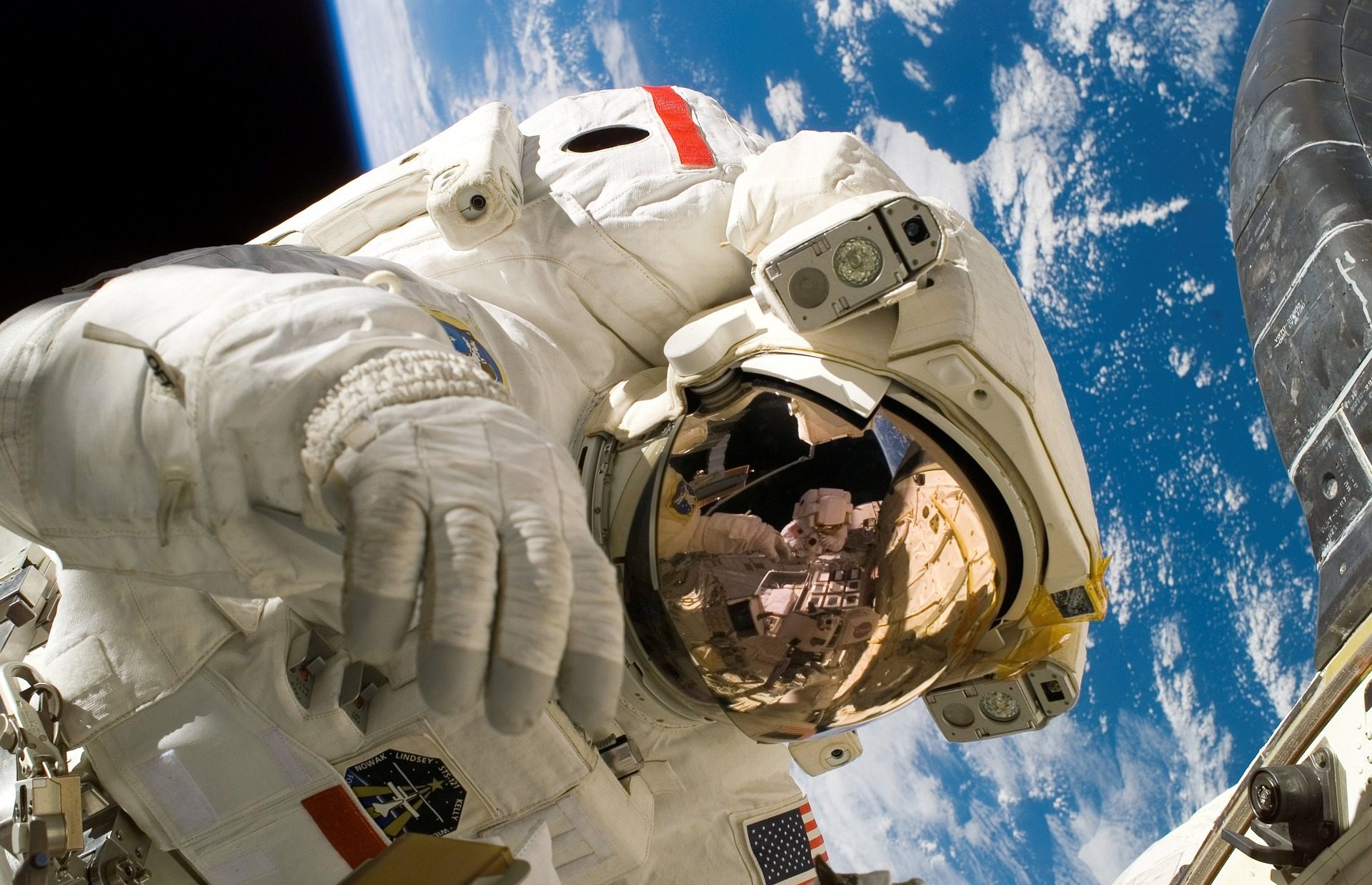Ever since humanity first looked upon the stars, it has been enraptured by the beauty and mystery of the cosmos. From the smattering of constellations across the night sky serving as a guide home, the waxing and waning of the moon as an ancient medium of worship, or the shooting of stars in the night sky gifting wishes through time, humans have always had an innate fascination with what the world above has to offer. This curiosity is what drove our ancestors to construct thousands of myths in an attempt to explain the meaning of these strange phenomena, and in doing so, find a way for us to connect deeper with a world we could not reach—until we did.
Rapid developments in modern astronomy and aerospace technology after World War II let us get closer than ever to the stars. During the first manned mission to space, launched in 1961, Soviet cosmonaut Yuri Gagarin orbited Earth for 108-minutes in his Vostok 1 spacecraft. The implications of this mission were both politically and scientifically significant. It helped to advance our knowledge of how ballistic missile technology could be used to power spacecrafts, and aided in the development of future Vostok missions that would later place the first woman, Valentina Tereshkova, in space and carry out the first joint flight of two different crewed orbiters.
While developments in ballistic missile technology allowed the field of rocketry to take off during the latter half of the 20th century, none of these strides could be made possible without the work of three key researchers in the early 1900s. From Konstantin Tsiolkovsky formulating the ‘Tsiolkovsky equation of rocket dynamics’, to Robert Goddard successfully launching the first liquid-fuelled rocket in 1926, and Hermann Oberth discovering the ‘Oberth effect’ (the ability of a rocket engine to generate larger quantities of kinetic energy when travelling at faster speeds during orbit than slower ones). The field of space exploration would not have got to where it is today without these discoveries and the countless others that have continued to build upon it.
Regardless of these ground-breaking achievements, tensions remained high between the two major players of what would soon come to be known as humanity’s first space race.
The rivalry between the United States and Soviet Union would culminate in the first successful mission to send humans to the moon and back. This accomplishment would have a major cultural impact on not only our understanding of space, but also on the way we live. The technology used to get people on the moon would later be used to develop everyday items, such as memory foam, cordless tools, and freeze-dried food. Being able to directly contact the moon also allowed researchers to study it in greater geological detail and uncover details of its history. A key example of this being the development of a model explaining the formation of the Earth-moon system in the early Solar System.
In the infamous words of Neil Armstrong, this accomplishment was ‘one giant leap’ for science and would go on to alter the course of space exploration forever.
Decades later, a new space race has emerged from the shadow of the old. Although the motivations might be a little different, the desire for success is just the same.
The new space race
Recent talks of future missions have been followed by a surge of space-related news in the mainstream media. Nowadays, it feels like everybody is trying to get to space, from billionaires like Jeff Bezos funding private celestial getaways to explore the limits of space, to governments like the US and China boasting their cosmological capabilities.
Both Chinese and American agencies have gone on to accomplish impressive feats of space exploration. From the Chinese National Space Agency (CNSA) establishing its own space station, to the National Aeronautics and Space Administration (NASA) launching its most powerful telescope to date. Both countries have demonstrated an incredible level of investment in their respective space programmes. This time, however, there seems to be a greater emphasis on economical rather than symbolic victory for both parties. Most missions are now concerned with mining resources and engineering novel technologies, motivations that may be considered less enthralling than the ones we have grown accustomed to seeing on the silver screen.
In the years following American and later Soviet success on the moon, other parties would eventually begin expressing interest in joining these astronomical ventures. Countries like China, India and Japan would rapidly expand and develop their own technological repertoires that would allow them to explore further afield. The Indian Space Research Organisation (ISRO) would go on to carry out several missions, including launching its first satellite Rohini Satellite (RS-1) and flying its first citizen to space. In a similar vein, Japan would also go on to form its first space agency, the National Space Development Agency, in 1969 to carry out further innovation and development in the field of space through satellite and rocket launches. China itself would become a major player later in the 1990s, launching their first taikonaut (Mandarin for “astronaut”) into space in 2003 following the establishment of its space agency in 1993.
This heightened competition, albeit less hostile, has caused many governments to express interest in cooperating for future missions and has even begun stoking the familiar embers of rivalry. Both NASA and the CNSA have announced similar plans to send humans back to the moon one way or another, with missions planned for as early as 2024 and both parties fighting to get a stronghold on lunar resources.
Both governments also have ambitious goals to take their exploration of space further. Recently, the CNSA has announced plans to launch a space power plant programme sometime within the next decade to better harness space-based solar power, a higher energy and more reliable solution to current methods. NASA has also announced similar plans to explore space with its DAVINCI+ mission. The spacecraft, expected to launch sometime in 2029, will travel to Venus and collect information on its composition and activity. These findings will hopefully inform
researchers of the sulfuric planet’s evolution and why it is so different from those surrounding it. These progressive attitudes show that while both countries have accomplished much, neither intend to halt their exploration of space just yet.
Government entities are not the only parties interested in building upon their exploration of space. Private companies like Virgin Galactic, SpaceX, and Blue Origin have also begun emerging in a bid to commercialise space flight and make it more accessible to the paying consumer than what public agencies can offer. Such ventures have culminated in multiple successful missions to send civilians into orbit, like that of SpaceX’s Inspiration4 and Blue Origin’s New Shepard mission. These developments indicate that space travel is no longer being done solely for scientific discovery, but also out of commercial interest.
Who benefits from space exploration?
With much fanfare about who gets to explore space and why, several questions are being raised about the practicality and purpose of such missions to space considering the problems humanity still faces on Earth. From what is considered to be the worst mass-extinction event since the Cretaceous–Tertiary (~65 million years ago), accompanied by mounting concerns of a dark extinction (the loss of species we never knew as having existed in the first place), the proposed Anthropocene era has brought about endless environmental crisis after the other, and an influx of activists fighting for policy change. It has also highlighted the already vast divide between high- and low-income countries in terms of how badly they have been affected by this crisis. Numerous studies have shown lower-income countries as suffering the worst of the effects of the global climate emergency facing problems like mass displacement and political instability despite making up less than 15% of global emissions,
As a result, many might argue that space has nothing to offer us and that we should concentrate our efforts on solving the issues we face here on Earth. What many critics fail to consider is the consequential benefits gained from investing in space science and research. It has done a great deal to create jobs in multiple sectors such as science (e.g., engineering, astrophysics), communications (e.g., journalism, photography), and human resources—government agencies employ thousands of employees (NASA—18,671 total) —and helping to advance research in other fields like medical science and engineering. Just some of the technologies derived from space exploration include improved solar panels, implantable heart monitors, and compact water purification systems. It has even allowed us to devise solutions and action plans to better defend our planet from extra-terrestrial threats.
Not only that, but space has played a major role in climate research and observation, with billions of dollars being invested into the monitoring of our planet’s oceans, lands, and atmospheres. In fact, NASA’s launch of Earth’s first weather satellite TIROS is what helped scientists first notice our changing climate. This discovery pushed the agency to continue launching new satellite missions to track climate indicators like global sea, land, and atmospheric temperatures to help us better understand our planet on a broader scale and monitor any further changes to the climate.
Beyond measuring temperature, these satellites can also be programmed to monitor air composition to help map the spread of forest fires in places like South America and Australia, or track the health of forests by looking at the specific wavelength of light emitted by different trees to help make informed decisions about which trees to plant and where.
Therefore, it would make sense that scientific research and the people that fund it ought to reap the most benefit from such ventures, especially considering the vast amounts of knowledge that are to be gained for future generations.
The trouble with space exploration
Unfortunately, even with the many benefits afforded to us by space, there are still plenty of issues preventing it from reaching its full potential. The launching of missiles and spacecrafts carrying cargo and passengers at greater levels, for example, runs the risk of worsening the existing problem of space junk and debris. It also entails releasing vast quantities of carbon dioxide and nitrogen oxides into the atmosphere that has the effect of contributing to pollution and global warming.
Another matter that is of increased concern is that of space tourism, an industry that remains both lucrative and highly inaccessible unless you are the average multimillionaire willing to give up what most would consider an arm and leg for a ticket. So beyond environmental costs, commercialised and privatised space flight also runs the risk of further widening the already yawning chasm between the world’s richest and poor, with such opportunities to explore space remaining largely exclusive to wealthy plutocrats like Jeff Bezos, while the people under their employment continue to suffer through exploitative working environments and the effects of rising living costs.
The existence of a small handful of players dominating the private industry also runs the risk of creating an oligopoly within the space industry that slows down innovation, growth, and potentially blocks newer companies from appearing.
This then raises an interesting question of whether billionaires should be able to profit from an industry most taxpayers would be unable to derive any benefit from; it is easy to boast of the infinite wonders of travelling to space when you are not struggling to keep your family warm at night.
Regardless of the various concerns and obstacles we might face, there is still much merit to continuing our ventures into space. From developing technologies, advancing our understanding of the world we inhabit, and allowing future generations to build upon our knowledge, there is still so much that space has to offer. However, we should not let the joys of space fall into the clutches of commercialisation. Just as our ancestors marvelled at the glory of the stars above, we should be able to do so too—free of charge.





